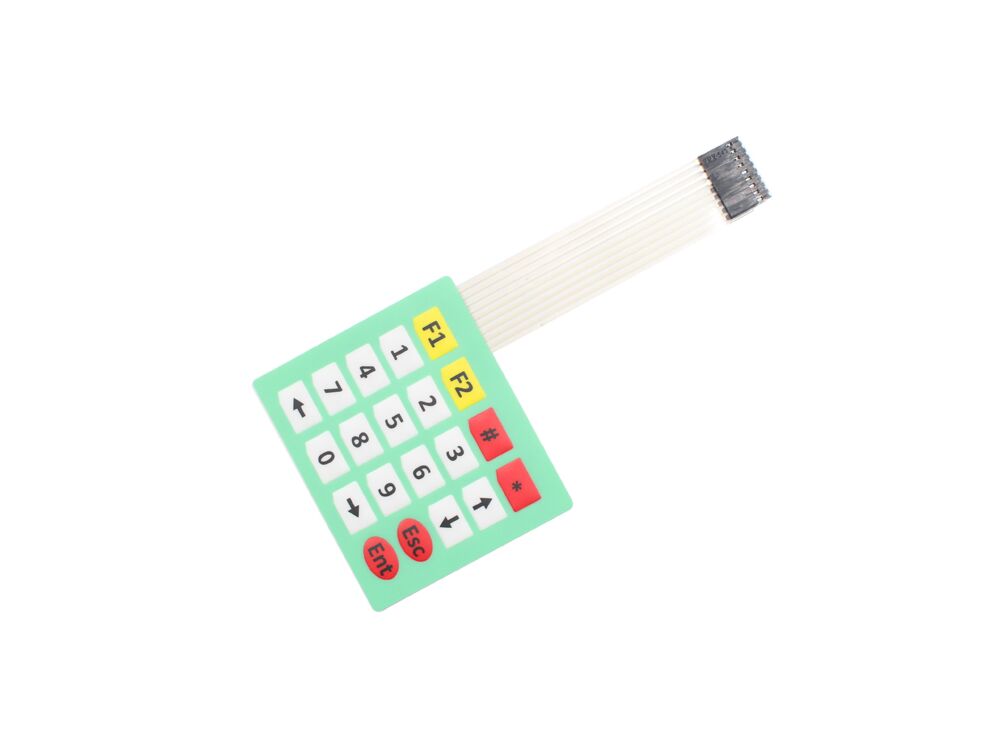Choosing the Right Membrane Switch for Your Business Needs
Wiki Article
Comprehending Membrane Layer Changes: The Key to Reliable and durable Controls

What Are Membrane Layer Switches?
Membrane buttons are an innovative service in the realm of individual interface modern technology, combining capability and style flawlessly. These devices work as a user interface between users and digital systems, incorporating numerous parts right into a portable format. Generally built from versatile, thin layers of products, membrane switches are developed to react to touch, making it possible for customers to connect with equipment and digital tools effectively.The primary components of a membrane switch include a published circuit layer, graphic overlay, and a spacer layer that stops unintentional activation. The graphic overlay can be customized to mirror brand name identity or customer choices, boosting aesthetic appeals while guaranteeing use. Membrane layer buttons are generally made use of in numerous applications, including clinical gadgets, consumer electronic devices, and industrial equipment, owing to their toughness and resistance to ecological aspects such as wetness and dirt.
Among the key benefits of membrane switches is their capability to withstand deterioration, making them perfect for high-traffic atmospheres. In addition, they are light-weight and require minimal area, enabling innovative styles in product growth. In general, membrane changes stand for a useful and effective selection for modern electronic user interfaces, weding technology with user-centric design principles.
Just How Membrane Changes Job
The operation of membrane layer changes depend upon a basic yet efficient system that converts customer input into digital signals. These buttons include numerous layers, generally including a visuals overlay, a spacer layer, and a circuit layer. When a customer presses the button, the leading layer deforms, permitting a conductive component in the circuit layer to reach a corresponding conductive pad on the bottom of the visuals overlay. This get in touch with shuts the circuit and sends out a digital signal to the device, indicating that the button has been turned on.The layout of membrane buttons can differ, but they usually integrate domes or tactile elements to supply responses to the customer, improving the total experience - membrane switch. The products used in membrane buttons, such as polyester or polycarbonate, add to their sturdiness and resistance to environmental aspects, consisting of wetness and dust. In addition, the printed circuits are commonly encapsulated, which secures them from wear and tear in time.
Benefits of Membrane Buttons

Furthermore, membrane layer buttons are known for their resilience. Built from durable materials, they are immune to dirt, wetness, and physical wear, which significantly extends their life expectancy compared to standard mechanical buttons. This sturdiness makes them especially appropriate for high-traffic environments and applications calling for long life.
One more significant advantage is the simplicity of cleansing and upkeep. The smooth surface area of membrane changes minimizes dust build-up and is commonly unsusceptible spills, making them optimal for setups that need constant sanitization.
In addition, membrane layer switches use a structured profile, bring about a thinner style that can be integrated into different devices without adding bulk. This feature not only enhances the visual click for info charm but additionally adds to a much more ergonomic product design.
Applications of Membrane Layer Switches
User-friendly and versatile, membrane buttons find applications across a variety of industries, consisting of medical tools, consumer electronic devices, and commercial devices. In the medical area, these buttons are integral to tools such as diagnostic devices, client monitoring systems, and infusion pumps, where reliability and convenience of cleansing are vital. Their capability to endure extreme atmospheres and keep functionality makes them ideal for such applications.
In consumer electronic devices, membrane switches are utilized in products like microwaves, cleaning makers, and remote controls - membrane switch. Their smooth design enables intuitive interface, improving the overall customer experience while providing durability and resistance to tear and put on
Commercial devices also takes advantage of membrane buttons, specifically in control panels for equipment and automation systems. These switches supply protection against dirt and moisture, ensuring constant performance in tough atmospheres. In addition, their customizable functions permit suppliers to tailor them to details functional needs, improving performance and capability.
Selecting the Right Membrane Change
When choosing a membrane layer button, it is necessary to take into look here consideration various elements that influence performance and suitability for specific applications. The main considerations consist of environmental conditions, tactile responses, resilience, and layout specs.
First, analyze the operating setting; buttons subjected to wetness, chemicals, or extreme temperature levels need specific materials to ensure durability and functionality. Next, review the demand for responsive feedback. Depending upon customer interaction, some applications might benefit from a tactile action to validate activation, while others might like a non-tactile design for visual factors.
Durability is another critical aspect; membrane switches should be created to endure frequent use, effects, and abrasion. Make certain the picked button can sustain the expected lifecycle, particularly in high-usage scenarios.

Final Thought
In conclusion, membrane layer switches serve as necessary elements in the layout of durable and dependable control systems across numerous industries. The adaptability of membrane layer changes permits for tailored solutions that satisfy specific functional requirements, reinforcing their significance in modern-day technology.
Membrane switches stand for an important aspect of contemporary interface style, blending capability with strength in various applications.Membrane switches are a sophisticated solution in the realm of individual interface technology, incorporating functionality and layout flawlessly. Commonly created from versatile, thin layers of materials, membrane layer switches are developed to react to touch, allowing customers to connect with machinery and electronic devices efficiently.
The design of membrane switches can vary, but they usually include domes or responsive aspects to supply responses to the user, improving the general experience.In verdict, membrane changes serve as crucial components in the style of reputable and resilient control systems throughout numerous industries.
Report this wiki page